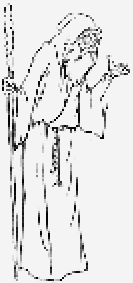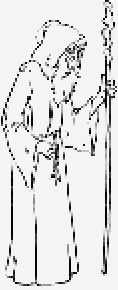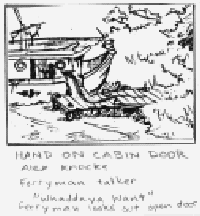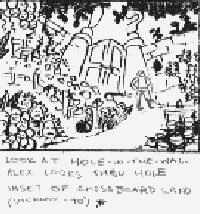




Long before you begin programming, you will probably spend several hours designing your game. Game design is (in my humble opinion) the most important aspect of gaming. A game that is well designed will capture the players interest and is challenging and fun to play. However, most inexperienced gamers aren't sure where to begin. The following is an article that explains how Sierra Adventure games are designed.
Title: Birth of an Adventure - The Creation of a Sierra Game
Date: Spring 1992
Published by: Interaction Magazine
Author: Lorelei Shannon (co-designer of KQ7)
Sierra Online receives many letters from people wondering how a particular game came into existance. Was it a story first? Who designed it? Who did the art, the programming, the writing?
These are all good questions. After all, when you look at a finished Sierra animated adventure, it's hard to imagine it was ever just an idea in the back of someone's head.
But it was.
Every Sierra game starts out its life in the same way: As an idea. The designers think of hundreds and hundreds of possible game ideas every month. They must sift through these ideas, and pick out the good ones, the fun ones, the original ones. Often times these decisions are made in "brainstorming" sessions, in which the designers pool their talents to create the best game possible.
When the designers have a really good idea, they write it down. The game idea's first incarnation is the "story treatment", just two or three paragraphs outlining the major events in the game.
Josh Mandel, director of product design at Sierra, elaborates. "The story treatment tells us everything we need to know. Is the raw concept of
the game -- which can usually be summed up in a few sentences -- exciting or uninspiring? Is the genre popular? Are the characters unique and interesting?
Does the setting sound like a place that will be fun to explore? Do a hundred puzzles and situations spring to mind? If a proposal pushes all the right
buttons (and it's hard to find one that does), then we all get excited, pat each other on the back, and try to get the proposal approved for expansion
into the full design document."
Once the game is approved for production, the designers create the "design document". This is almost like a short story which describes in detail the characters, actions, and plot branches in the game.
The characters are developed even further. The designers work with the production designer to come up with a visual image of the character. Sierra characters
are often so fully developed by the game designer that much of the information never gets used in the game. For instance, Roberta Williams could undoubtably
tell you what Princess Rosella's favorite color is, and Lori Cole (co-designer of KQ6) could tell you about the bookwyrm's childhood. The very fact that
this information exists makes the characters much more alive and real.
Once the plot and characters are set, decisions are made as to the ultimate "look" of the game. "The initial concept for the way a game
will look can come from any one of several different sources,"
said Bill Davis, Sierra's creative director. "Many times, as the design develops, I formulate very specific ideas for a games 'art style'. In situations
like this, it becomes my simple task to convince the director, designer, and production designer that I'm right. At other times, it may be the designer
who has the initial vision, the director another time, or the production designer another."
Ultimately, though, the burden of physically developing the "look" is placed on the shoulders of the production designer for Sierra, Andy Hoyos.
When Andy has completed his 'treatment', the baton is passed along to the game's art designer. He or she is assigned the responsibility of actually interpreting
this treatment or style throughout the actual game. What a team!
Next, the designers team up with the artists to create storyboards. These combine art and text to illustrate the major screens and actions in the game. The storyboards ultimately function as a sort of map for the artists and animators to work with.
The last stage of design is the final script for the game, much like a Hollywood movie script. Also like Hollywood, Sierra scripts often stay open for revision and interpretation by various members of the team throughout production. Everyone's opinion counts.
Of course, it is most likely that you will be working on your game alone, not in a team environment - but most of the rules still apply. You'll want
to brainstorm to find a great idea, then work out the major events that occur in the game. After that, you can begin to fill in the details concerning
plot twists, characters, puzzles, and actions. It might be a good idea for you to keep a notebook to jot down ideas to work into the story, and to make
some sketches. Now the hard part - you'll need to take those sketches and rough story line, and put them together. Make sure you have a good idea of
what will be going on in each scene (or room) in the game, and draw a map. Finally, write a script for your game. It is likely to change a little when
you begin programming, but it will serve as a reference as you go.





Top
You can help keep The Sierra Help Pages and its affiliates alive by helping to defray some of the costs of hosting this site. If it has been of help to you, please consider contributing to help keep it online.Thank you.
The Sierra Help Pages | Sierra Game Help | Walkthroughs | Hints, Tips & Spoilers | Utilities | Links | SHP Forums | Search
© 2013 to present The Sierra Help Pages. All rights reserved. All Sierra games, artwork and music © Sierra.
�